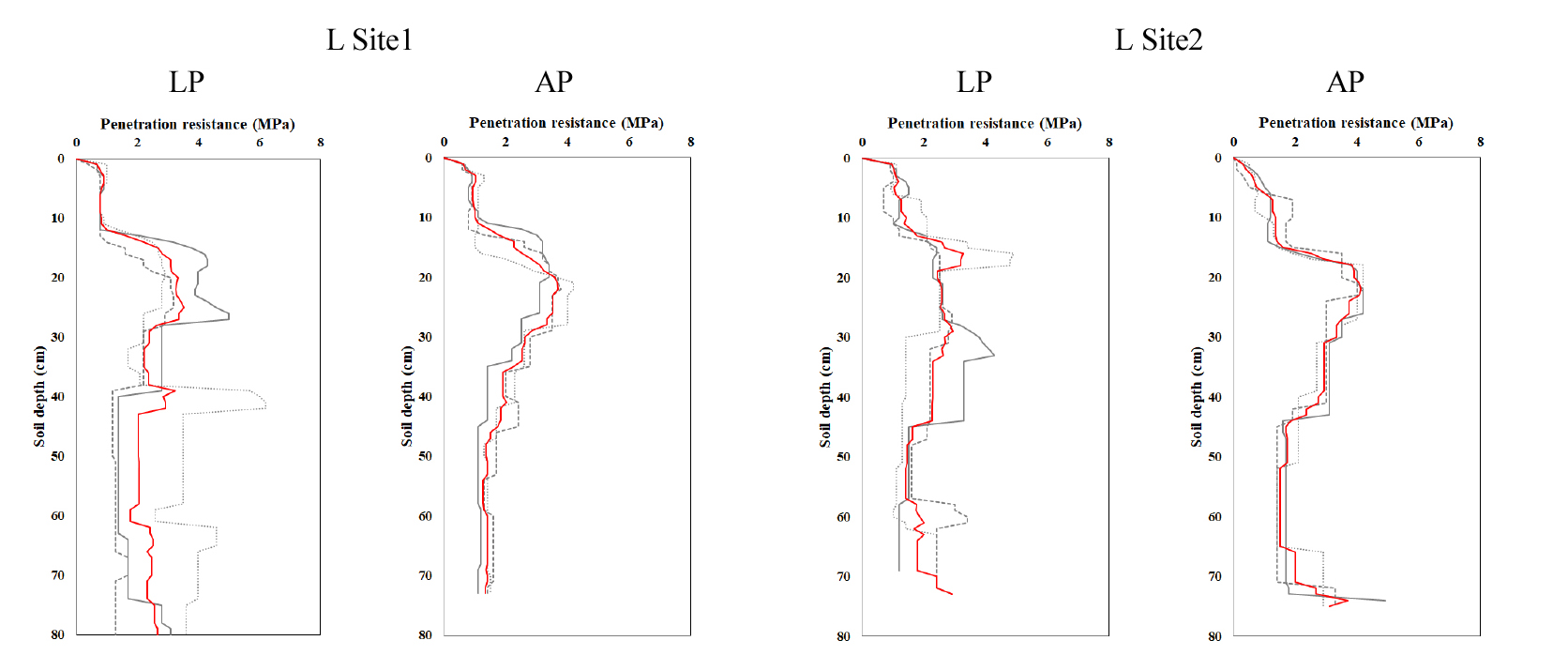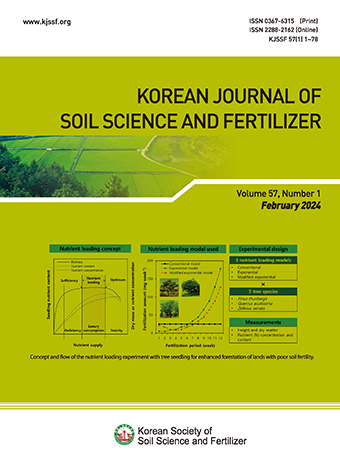Original research article
Abstract
References
Information
Cho, H.R., Y.S. Zhang, K.H. Han, H.J. Cho, J.H. Ryu, K.Y. Jung, K.R. Cho, A.S. Ro, S.J. Lim, S.C. Choi, J.I. Lee, W.K. Lee, B.K. Ahn, B.H. Kim, C.Y. Kim, J.H. Park, and S.H. Hyun. 2012. Soil physical properties of arable land by land use across the country. Korean J. Soil Sci. Fert. 45(3):344-352 (in Korean).
10.7745/KJSSF.2012.45.3.344- Publisher :Korean Society of Soil Science and Fertilizer
- Publisher(Ko) :한국토양비료학회
- Journal Title :Korean Journal of Soil Science and Fertilizer
- Journal Title(Ko) :한국토양비료학회 학회지
- Volume : 52
- No :2
- Pages :143-152
- Received Date : 2019-04-24
- Revised Date : 2019-05-14
- Accepted Date : 2019-05-27
- DOI :https://doi.org/10.7745/KJSSF.2019.52.2.143




 Korean Journal of Soil Science and Fertilizer
Korean Journal of Soil Science and Fertilizer








